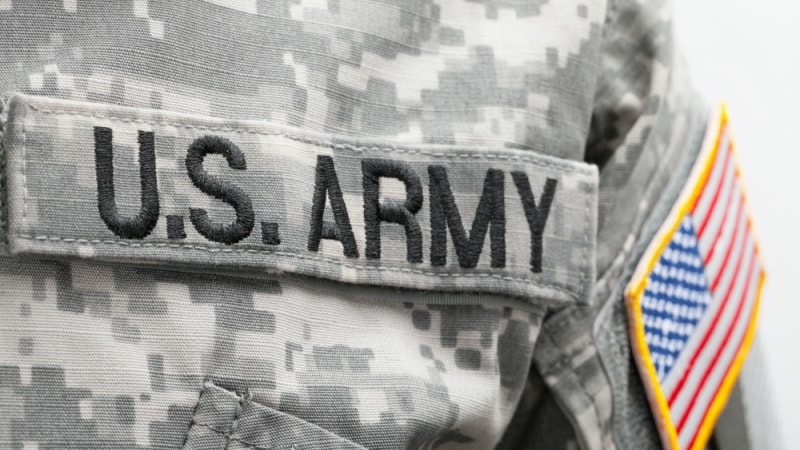
U.S. Army Chief Information Officer (CIO) Leo Garciga said today that his team is working on a “wide swath of things” in the generative AI space and detailed the service branch’s exploration of large language models as a service (LLMaaS).
During the opening keynote of AFCEA International’s TechNet Augusta 2024 in Augusta, Ga., Garciga said “the idea of as a service in [the generative AI] space is going to be really, really important.”
The CIO highlighted that the Army is currently focused on “spending a lot of the time on the front end” by asking, “What problem are you trying to solve?” before deploying an LLM.
This process has resulted in the Army launching nine LLM efforts to lay the foundation for future use cases. Garciga offered examples of two of these programs, noting the service branch is actively leveraging generative AI for soldier wellbeing and aviation safety.
Garciga’s office released its first version of generative AI guidance for the Army in late June and said they have been partnering with small businesses in this space to get a “good lay of the land.”
“I’m really focused on large language models right now,” Garciga said. “What we’re really finding, and our observations have been: conversational AI … That’s where we’re seeing a lot of folks work through [for back-office stuff].”
“The Army has a lot of tasks,” Garciga said. “How do we better search, go through those tasks … It would be nice if we could just get some lift to get there faster and reduce that cognitive burden. [There’s] lot of work in that space – a lot of work in the mission space, on the cyber side, in this area, too – but we’re seeing mostly back-office.”
“The AI assistant piece has been really, really interesting. This idea of much smaller models and integrating them together, [we’re] spending a lot of time in that space right now. One, to get a good lay of the land. Where do these things make sense? And also, to think through this idea of, are there specific Army models we have to worry about,” Garciga said. “We’ve got our own culture. We’ve got our own way of doing business. How do we shape that?”
The CIO highlighted that the number one use case he sees right now for LLMs is through the Army Judge Advocate General’s Corps. “Attorneys are really good at using this stuff, and it has cut down our time to get policy out and to move through the bureaucracy of the department because they’ve been able to use LLMs to triage law.”
“I’m super excited in this space right now, because really, industry has come to the table in a very good way with lots of lessons learned. Everybody’s been pragmatic, [saying], ‘Here’s where we are in the story. This isn’t a 100 percent solution, maybe this gives you some lift,’” he continued, adding, “I think this next stage is, how do we make it available more broadly?”
Army Set to Release cATO Guidance, CIO Previews new Pilots
Separately during his opening keynote this morning, the CIO highlighted that he is about two weeks out from signing new guidance that would give the Army fresh direction on achieving continuous authorization for DevSecOps platforms.
The Pentagon released its own continuous authorization guidance in April, which seeks to guide defense agencies to achieve continuous authorization (cATO) to operate DevSecOps platforms and other applications produced by a software factory as part of efforts to counter cyber threats.
For defense agencies to deliver new features rapidly, they need an authorization process that keeps pace with continuous change for a developing capability – a cATO. Many defense agencies have identified obtaining an “authorization to operate” as the longest step in developing and deploying software.
Garciga said today during TechNet Augusta 2024 that the Army’s cATO guidance document is “in the final stages.”
“It’s inside the Army’s bureaucracy,” he said. “We’re about two weeks out from it being somewhere near my desk for signing.”
Garciga said the forthcoming guidance is “really simple.”
“Have an initial ATO, go as fast as you can and deliver software. Don’t need to redo [the ATO]. Don’t need to have a secondary ATO. This is really about, can we deliver directly to production,” the CIO said.
Garciga said his team is “comfortable with what we’re seeing right now” in terms of the two cATO pilot programs the Army has deployed.
“We’ve got two programs: PEO Soldier – PM Nett Warrior; we’ve been working with them over the last six months. [I’m] very comfortable with where they are in the story. They will probably be the first, no joke, real Army cATO at scale, with multiple tenants,” Garciga said. “The other one’s going to be combination with ARCYBER and PM-DCO – Gabriel Nimbus.”
“Big shout out to ARCYBER for really working this piece hard over the last two and a half, three years. I think that’s really important – we didn’t wake up last year and say we were going to do this. This has been, in many ways, about a three-year effort between some folks in the Army G2, some folks in CIO, some folks in G6, and some folks at ARCYBER to really lay the foundation to make this happen for the Army.”
The CIO said the cATO guidance document for the Army should be published in the next 30 days.
“[We’re] definitely looking for feedback,” he told the audience of more than 6,000 attendees. “[It’s] probably an 80 percent solution. I’m going to admit it, we probably don’t have 100 percent. [There are] still some challenges on how does this look for hardware in the loop … So I think we need some help on rethinking what that looks like.”
